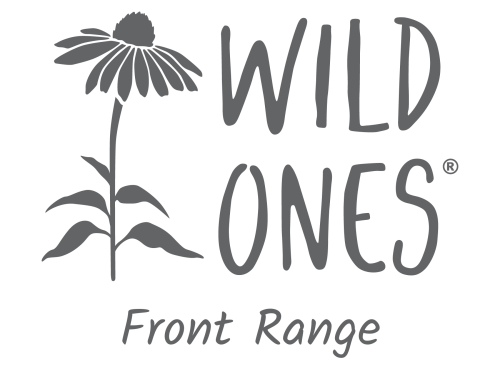By Karen Vanderwall
Popping into a local nursery one day a few years ago, a very interesting tall ornamental grass caught my eye. With closer inspection I noticed that the seed heads resembled blond eyelashes – it was spectacular!
The grass was ‘Blond Ambition’, a specific cultivar of blue grama grass*. Upon further reading I discovered that blue grama grass is an important native plant of Colorado. It is so important that it happens to be Colorado’s state grass!

Blue grama grass, Bouteloua gracilis, is a perennial warm season bunchgrass which, unlike spreading grasses, has a bunching or clumping growth habit. Blue grama, also known as mosquito grass (and not because it attracts mosquitos!), grows to 6-24 inches tall (including seed heads), spreading from 12-18 inches wide and develops pinkish horizontal seedheads (resembling eye lashes) in late summer. It then turns a light tan and if left un-cut, continues to shine through winter.
This perennial grows in full sun and does not need watering after it is established. It is drought tolerant and grows easily from seed. Blue grama is a great option for those areas that are difficult to maintain (looking at you parkway strip), where there can be more limited maintenance (mowing just a few times a year) and in areas with little foot traffic, due to its clumping growth habit. It is commonly planted as a turfgrass when mixed with buffalo grass. Because of its bunching habit, it mixes well in sunny perennial gardens. Blue grama actively grows from April – October.
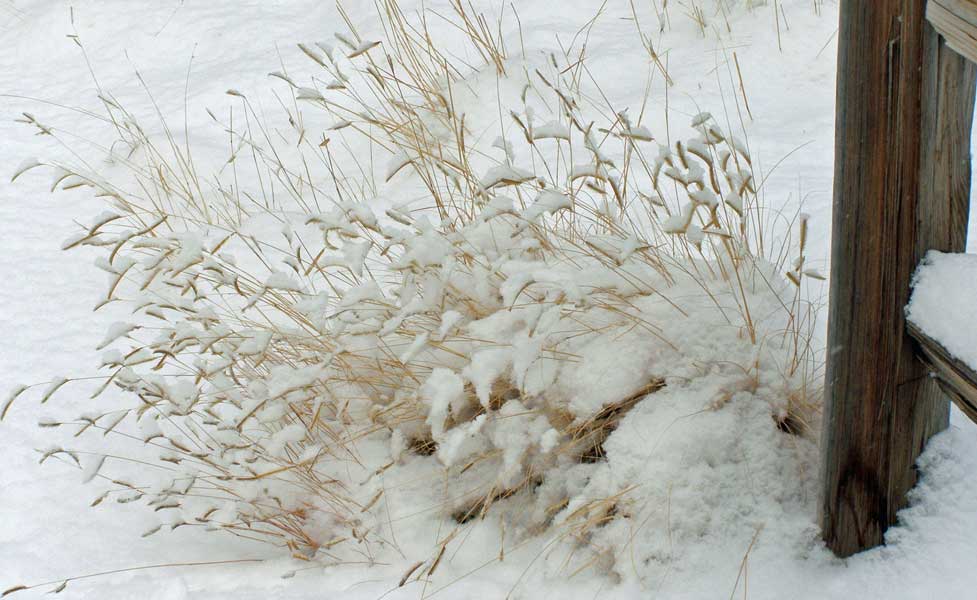
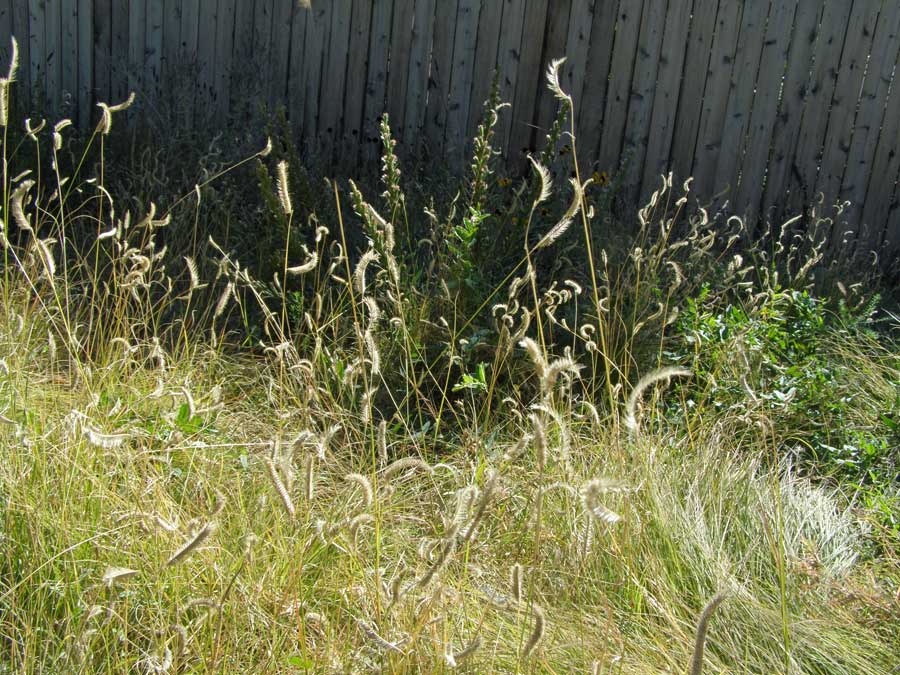
This grass is widespread throughout much of North America where it is native from Canada down through Mexico, from Illinois down to Texas and west to California in the United States. Bouteloua gracilis is one of the two most common native grasses of the short-grass prairie ecosystem (the other being buffalograss, Bouteloua dactyloides). It was designated the Colorado state grass because it is so widespread in Colorado’s short grass prairie and to acknowledge and emphasize its ecological significance.
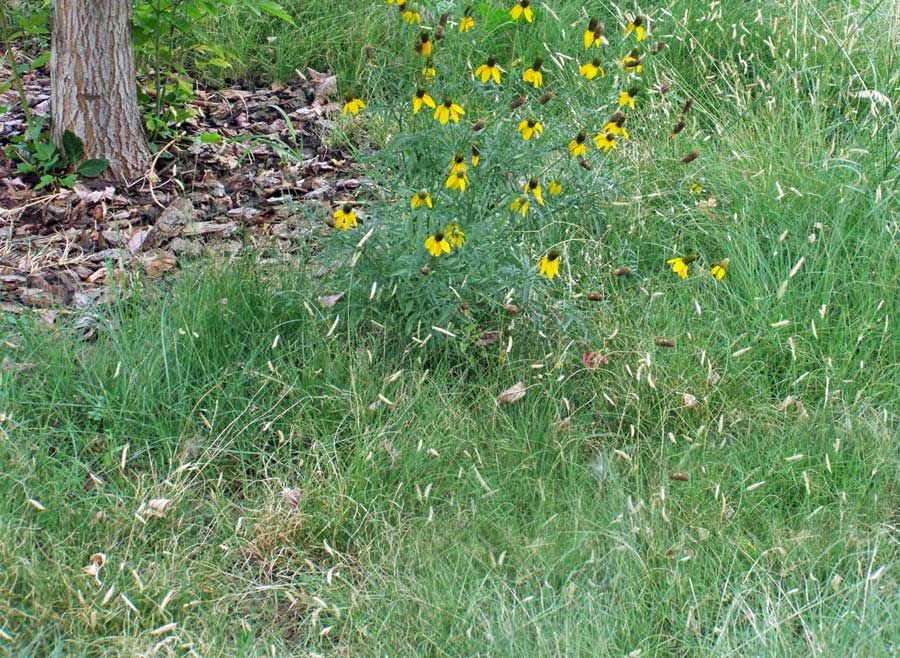
The ecological importance of Bouteloua gracilis is significant. As a keystone species, it provides habitat and stability to the short grass prairie ecosystems. The dense plants provide cover and nesting sites for wildlife. Since it is a warm season grass, it thrives during the hottest time of the summer, when cool season grasses go dormant. (The downside of that is that it greens up later in the season than a cool season grass.) Elk, pronghorns, bighorn sheep as well as bison forage on its leaves. Ground birds and songbirds eat the seeds of this important prairie grass, and it is a larval host for several species of skipper butterflies. Small mammals such as pocket gophers, jackrabbits and prairie dogs also eat its seeds. Lastly, its dense shallow root ball holds prairie soils in place, preventing erosion.
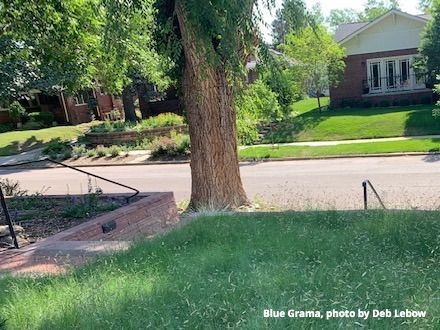
Do you have a place in your lawn where Kentucky blue grass is struggling (and you really, really want to get rid of your KBG!)? Or are you looking to give up some mowing time to be able to do something more interesting? Blue grama is such a versatile plant, think about how you can be creative with areas your turf lawn occupies or in your native garden with this hardy prairie delight.
* Note that we much prefer that you plant straight species and not cultivars.
References:
Colorado Natural Heritage Program, Ecological systems: Shortgrass Prairie, 2010
Colorado Springs Utilities, Blue grama
Lady Bird Johnson Wildflower Center, Bouteloua gracilis (Blue grama) Native Plants of North America
Missouri Department of Conservation, Field Guide, Blue Grama
The Native Grass Working Group, Colorado Native Grass Guide, 2024
Northern Water Utility, Water Wise Landscapes
USDA, NRCS Plant Materials Program, Plant Fact Sheet, Blue grama U.S. National Park Service, Badlands Mixed-grass Prairies
